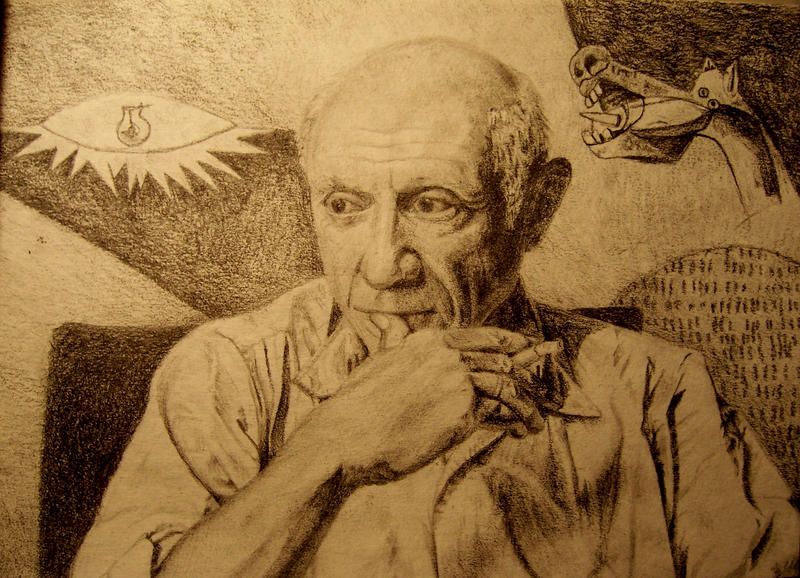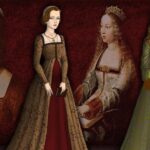Pablo Picasso Net Worth, Age, Legacy and Story
Pablo Picasso Net Worth in 2025: How Much Was the Legendary Artist Worth?
Let’s talk numbers, because you know what? Even decades after his passing, Pablo Picasso’s net worth is still a hot topic. As of 2025, experts estimate the “Pablo Picasso net worth” at over $500 million. That’s right—his estate, artwork, and licensing deals continue to generate massive value. If you compare this with last year, when the estate was valued at about $480 million, and the year before, when it hovered around $470 million, you’ll see a steady increase. This growth mostly comes from the rising value of his paintings and ongoing exhibitions around the world.
Now, let’s break it down in a way that makes sense for you. Imagine if Picasso’s estate was a business still running today. He’d be earning about $57,000 every hour, $1.37 million a day, $41.6 million a month, and a whopping $500 million a year. That’s more than most CEOs of Fortune 500 companies! This shows just how powerful the “Picasso” brand remains, even long after his death.
What’s fascinating is that the “Pablo Picasso net worth” isn’t just about paintings. His name is licensed for everything from museum shows to merchandise. Plus, whenever a Picasso artwork is auctioned for tens of millions, a portion of that value reflects back on his estate’s overall worth. So, if you ever wondered how much an artist’s legacy can be worth, Picasso is the ultimate example.
Here’s the thing: the numbers don’t even account for the cultural value Picasso brought to the world. His influence on modern art is priceless, but when it comes to cold, hard cash, his legacy is still breaking records. If you’re curious about how other artists stack up, check out Forbes’ list of highest-earning dead celebrities for a sense of just how rare Picasso’s financial impact is.
About Pablo Picasso: The Man Behind the Masterpieces
Why is Pablo Picasso so popular?
If you’ve ever seen a painting that made you stop and think, “What is going on here?” there’s a good chance it was inspired by Picasso. He was born on October 25, 1881, in Málaga, Spain, and died on April 8, 1973, in Mougins, France, at the age of 91. Picasso is famous for co-founding the Cubist movement, inventing constructed sculpture, and pioneering collage. His works like Les Demoiselles d’Avignon and Guernica are considered some of the most important art pieces of the 20th century.
Industry and Nationality
Picasso belonged to the visual arts industry—painting, sculpture, ceramics, and even stage design. Though Spanish by birth, he spent most of his adult life in France.
Awards and Recognition
Picasso received numerous awards, including the First Prize at the 1930 Pittsburgh International. His work is displayed in top museums like the Tate and MoMA, and he remains a household name in art history.
Controversies and Criticism
Picasso’s personal life was as colorful as his art. He was known for his many affairs and relationships, including with Olga Khokhlova (his first wife), Marie-Thérèse Walter, Dora Maar, Françoise Gilot, and Jacqueline Roque (his second wife). His relationships often overlapped, leading to public criticism and controversy, especially regarding his treatment of women.
Best Friends and Rivals
Picasso’s circle was filled with creative minds. He was friends with poet Guillaume Apollinaire, writer Gertrude Stein, and painter Georges Braque, with whom he developed Cubism. His rivalry with Henri Matisse is legendary in art circles.
Personality and Appearance
Picasso was known for his intense, “piercing” eyes and energetic personality. He had dark hair in his youth, which turned white as he aged. His body was fit and active, especially in his younger years.
Early Life and Background
Picasso’s father, José Ruiz Blasco, was an art teacher. Picasso showed artistic talent from a young age, and his family moved to Barcelona, where he attended the School of Fine Arts. He later studied at the Madrid Academy.
Children and Family
Picasso had four children: Paulo, Maya, Claude, and Paloma. His parents were José Ruiz Blasco and María Picasso y López.
Hobbies and Lifestyle
Besides art, Picasso loved bullfighting, music, and reading. He was known for his bohemian lifestyle in Paris and later enjoyed the Mediterranean life in southern France.
Favorite Foods and Books
Picasso enjoyed traditional Spanish cuisine, especially seafood and paella. He admired authors like Ovid and Buffon, whose works he illustrated.
Challenges and Health
Picasso faced criticism for his radical art styles and personal choices. He also lived through two world wars and the Spanish Civil War, which deeply affected his work, especially Guernica. Despite his age, he remained healthy and productive, painting until his last days.
Religion and Politics
Picasso was baptized Catholic but later joined the Communist Party in 1944. His political views often influenced his art.
Charity and Philanthropy
While not known for large-scale charity, Picasso donated works to museums and causes he believed in, especially related to peace and anti-war efforts.
Scandals and Legal Issues
Picasso’s estate was involved in legal battles over inheritance after his death, due to the vast value and number of his works.
Unknown Facts About Pablo Picasso
Did you know Picasso’s full name is 23 words long? Or that he could draw before he could walk? He also had a pet owl and a dog named Lump, who appeared in many of his paintings.
Public Backlashes
Picasso was sometimes criticized for his unconventional lifestyle and the abstract nature of his art. The last major backlash came in the 1970s, when feminist critics re-examined his treatment of women.
Lifestyle and Assets
Picasso owned several properties in France and Spain, filled with his art. His income came from art sales, exhibitions, and licensing. He lived a lavish yet artistic life, surrounded by friends, family, and fellow artists.
Views on Life
Picasso once said, “Every child is an artist. The problem is how to remain an artist once we grow up.” This quote sums up his playful yet profound approach to life and art.
Education & Career: How Picasso Became a Legend
Picasso’s education started early. His father, an art teacher, began training him at age seven. By 1895, Picasso was attending the School of Fine Arts in Barcelona, where he quickly outpaced his classmates. In 1897, he moved to Madrid to study at the Royal Academy of San Fernando, but he found the academic style limiting and soon left to pursue his own path.
His career took off in 1900 with his first exhibition in Barcelona. That same year, he visited Paris, which was the center of the art world. By 1904, he had settled in Paris for good, joining a vibrant community of artists and writers. Picasso’s career is marked by distinct periods: the Blue Period, Rose Period, African-influenced Period, and the Cubist Period, which he developed with Georges Braque. He faced challenges, including poverty in his early years and criticism for his avant-garde style, but he persisted and eventually became the world’s most famous artist.
Picasso never really retired. He continued to create until his death in 1973, leaving behind over 20,000 works of art.
Achievements and Contributions: Picasso’s Lasting Impact
Picasso changed the art world forever. Here are his top achievements and contributions:
- Co-founded the Cubist movement, revolutionizing how people see and create art.
- Invented constructed sculpture and co-invented collage.
- Created masterpieces like Les Demoiselles d’Avignon and Guernica.
- Prolific output: over 20,000 artworks, including paintings, sculptures, ceramics, and drawings.
- Influenced generations of artists and movements, from Surrealism to Abstract Expressionism.
- Designed sets and costumes for ballets, blending visual art with performance.
- Illustrated classic literary works, bringing art to new audiences.
- His painting Guernica became a symbol of anti-war sentiment worldwide.
- Major exhibitions at MoMA, Tate, and the Musée des Arts Décoratifs cemented his legacy.
- Won the First Prize at the 1930 Pittsburgh International.
- Inspired countless books, documentaries, and films.
- His art commands record prices at auctions, with some works selling for over $100 million.
- Picasso’s estate remains one of the most valuable in the world.
- He was a cultural ambassador, using his fame to promote peace and creativity.
- Picasso’s signature style is instantly recognizable and still copied today.
- He broke the boundaries between art forms, blending painting, sculpture, and design.
Height, Color, and Weight: Picasso’s Physical Traits
If you’re curious about “Pablo Picasso height” and appearance, here’s what you need to know. Picasso stood about 5 feet 4 inches (1.63 meters) tall. He had dark brown hair in his youth, which turned white as he aged, and deep brown eyes. In terms of weight, he was of average build, maintaining a healthy and active lifestyle well into his old age.
Social Media Accounts: Picasso’s Digital Legacy
Since Picasso passed away in 1973, he doesn’t have personal social media accounts. However, the Picasso estate and major museums manage his digital presence. For example, the official Picasso Museum Instagram has over 500,000 followers, sharing updates about exhibitions and Picasso-related news.
FAQs about Pablo Picasso
Q1: What was Pablo Picasso’s nickname?
His friends called him “Pablito” or simply “Picasso.” Early in his career, he also went by Pablo Ruiz.
Q2: Did Picasso have any pets?
Yes, he had a dachshund named Lump and a pet owl, both of whom appeared in his artwork.
Q3: What was Picasso’s zodiac sign?
He was a Scorpio, born on October 25.
Q4: When did Picasso marry, and who were his spouses?
Picasso married Olga Khokhlova in 1918 and Jacqueline Roque in 1961.







